Top 5 Photography Spots in Inner Mongolia
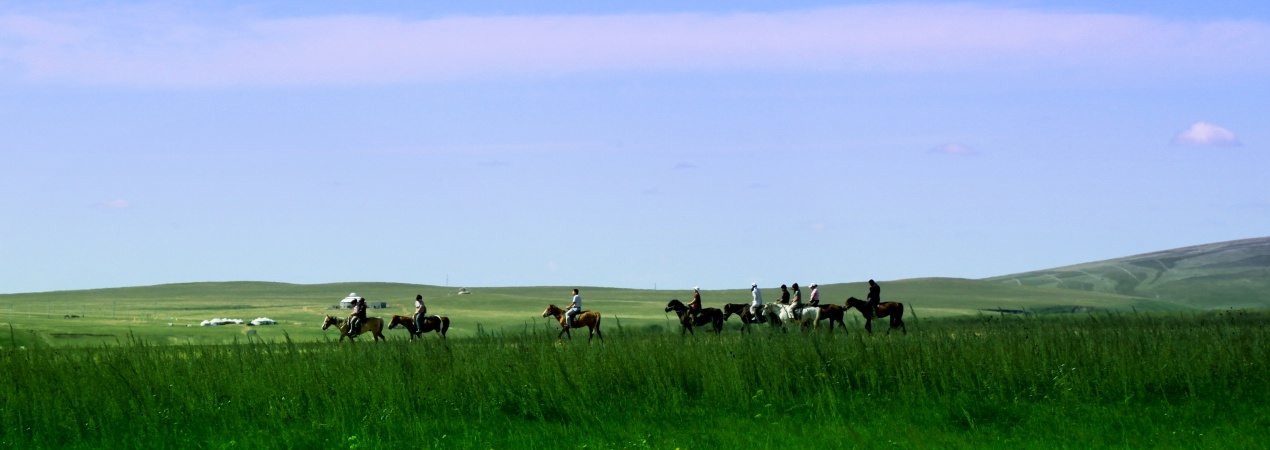
Inner Mongolia Autonomous Region is a great place for photographers because it has huge grasslands, amazing deserts, strange poplar forests and special volcanic landforms. We pick the five most popular photography spots in Inner Mongolia by following advice from reliable groups and using the newest tourism information. Every spot has its own natural views and cultural appeal, so they are perfect for taking photos.
Hulunbuir Grassland
Geographic Overview
One of the world's four major grasslands, Hulunbuir Grassland sits in the northeastern part of the Inner Mongolia Autonomous Region. Covering 180,000 square kilometers, it has won the title of "China's Most Beautiful Grassland" from Chinese National Geography. The famous line "When the wind blows, the grass bends to reveal cattle and sheep" perfectly describes this place. On the grassland, the Morigele River is called "the most winding river under heaven". It winds across the grassland like a blue hada, making a unique "S"-shaped curve. You can get highly dynamic natural shots either by using a wide-angle lens for the river's full view or a telephoto lens to take pictures of the herds along the riverbank.
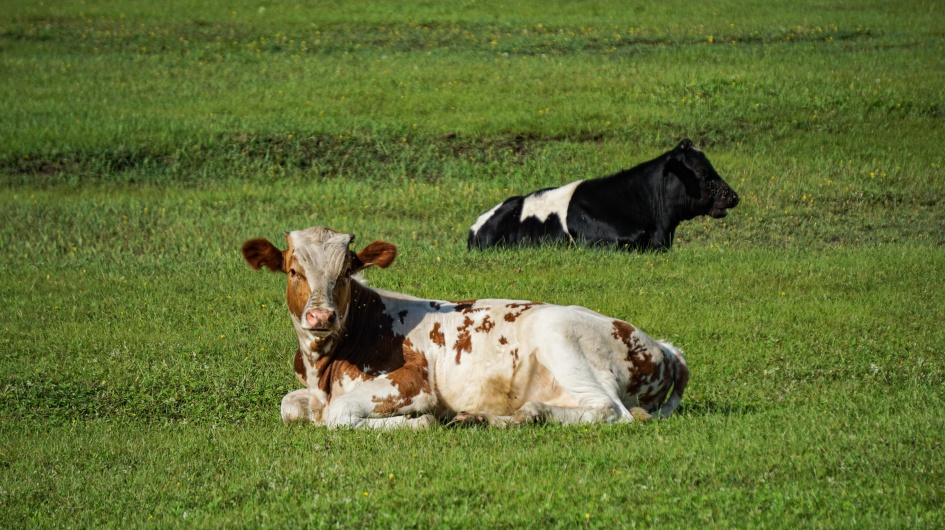 The cows of the Hulunbuir Grassland
The cows of the Hulunbuir GrasslandPhotography Themes and Best Times To Shoot
From September 16 to October 7, Hulunbuir will have its golden autumn in 2025. The "highlight period" is September 16-25, when colors are most saturated. The grassland turns from emerald green in midsummer to wheat gold little by little. It makes a three-tone gradient with the yellowing birch forests and reddening shrubs around. If you shoot against the light in the morning or evening, the grass waves will glow with a clear golden sheen. Also, the silhouettes of people or herds will stand out a lot. It enters "late autumn" from September 26 to October 7. The forests have richer colors then, so it's good to go south from the grassland to Erguna Wetland and Arxan. You can take connected photos of the transitional "grassland - wetland - forest sea" landscape. Summer (June-August) is mostly green, but folk activities like wrestling and horse racing at the Naadam Festival give plenty of dynamic cultural material for photography.
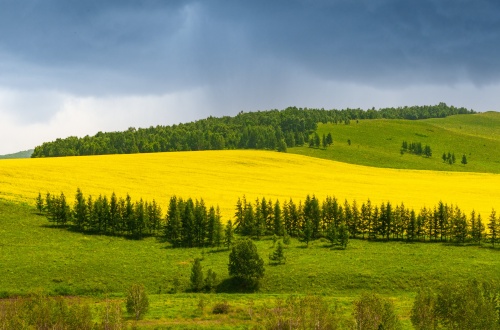 Grassland with green and yellow colour
Grassland with green and yellow colour
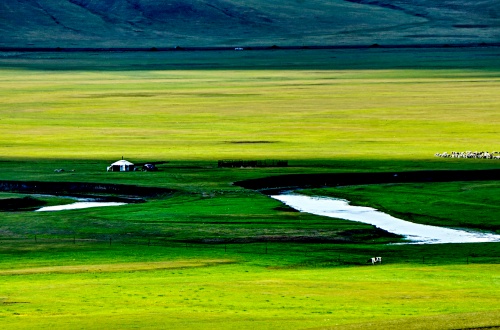 Cloud-covered grassland
Cloud-covered grassland
Recommended Photography Spots & Tips
The Cliff Viewing Platform of the Morigele River is the core spot for capturing the "winding river with numerous bends". From 4 pm to 6 pm, the sunlight angle is optimal with moderate light contrast, and a wide-angle lens can fully show the "S"-shaped curve of the river course. Heishantou Sunset Hill is a prime spot for shooting grassland sunsets. When taking photos, you can use sheep flocks, wooden fences and winding pastoral paths as foregrounds to make the layering of grass waves more distinct. When the setting sun dyes the grassland golden red, pressing the shutter will capture the magnificent scene of a "golden ocean". The birch forest belt along the Enhe-Shiwei route is suitable for morning shooting. When the thin morning mist lingers, sunlight passes through the branches and leaves to form the "Tyndall effect", and matching with the figure of a herder riding a horse can create a quiet pastoral atmosphere.
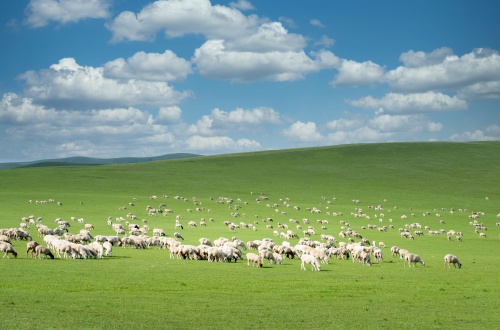 Flocks of sheep on the grassland
Flocks of sheep on the grassland
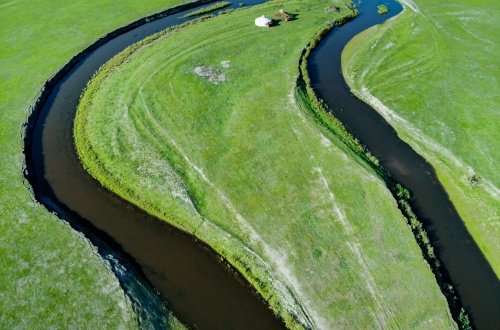 Morigele River
Morigele River
Arxan National Forest Park
Geographic Overview
Arxan National Forest Park is located in Arxan City, Xing'an League, Inner Mongolia Autonomous Region. Situated at the southern foot of the Greater Khingan Range at 47°N latitude, it is a national 5A-level tourist attraction and one of Asia's largest clusters of volcanic lava landforms, known as the "Museum of Volcanic Landforms". The park is home to 10 volcanic Tianchi (lakes), 3 lava plateaus and 2 unfrozen rivers, among which Tuofengling Tianchi, Santan Gorge andShitang Forest are the core photography spots. The strong color contrast between the deep black of volcanic rocks, the golden yellow of birch forests, the emerald green of pines and cypresses, and the azure blue of Tianchi water allows shooting both the grandeur of geological wonders and the soft beauty of autumn scenery in the forest. After the opening of the Shenyang-Baihe High-Speed Railway in 2025, the journey from Shenyang to Arxan will take only 4 hours, further improving the accessibility of the scenic area for photography.
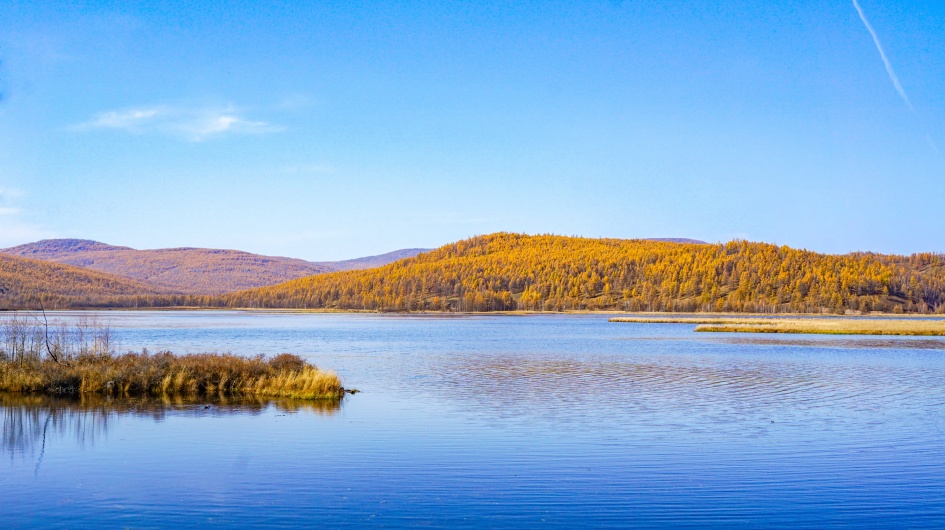 Arxan National Forest Park
Arxan National Forest ParkPhotography Themes and Best Times To Shoot
The best season for photography in Arxan is from mid-September to early October, with the peak autumn scenery period in 2025 being September 15 to October 5. During this time, birch leaves turn fully yellow and take on a "gold leaf-like" texture under sunlight. Pines and cypresses growing in the cracks of volcanic rocks remain emerald green, forming a three-color layer of "green-yellow-black" with the black lava—making it the best time to shoot the "volcano and colored forest" combination. Around September 22, the trees around the unfrozen rivers in the park enter the "full yellow period". The river water, with a year-round temperature of 7℃, never freezes even in autumn, reflecting the colored forests on the banks and creating a stunning "colored forests mirrored in water" scene. Although summer (July-August) is dominated by green, the symbiotic "lava and moss" landscape in Shitang Forest and the blooming wildflowers by Azalea Lake are also high-quality subjects for ecological photography.
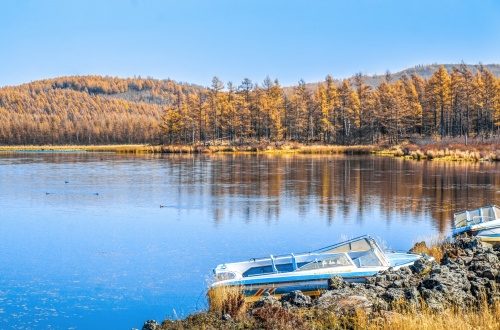 Arxan National Forest Park in autumn
Arxan National Forest Park in autumn
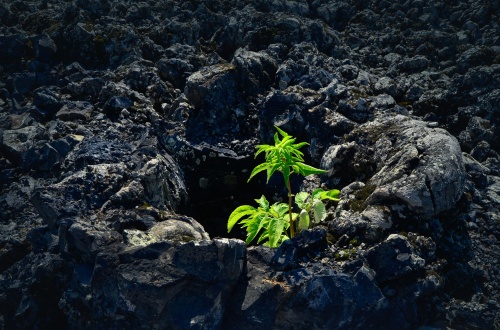 Volcanic rock of Arxan National Forest Park
Volcanic rock of Arxan National Forest Park
Recommended Photography Spots & Tips
Tuofengling Tianchi should be shot from an overlook at the viewing platform, with the lake surface shaped like a heart. Before 9 am, when thin mist still lingers, aerial photography with a drone (which needs to be registered in advance at the scenic area) can show the overall outline of the Tianchi and the surrounding forest sea. For ground shooting, it is recommended to use golden birch trees as the foreground to highlight the tranquility of the Tianchi. Shitang Forest is the core shooting spot for lava relics. Low-growing pines, cypresses and moss grow on the black lava plateaus; a macro lens can capture the details of "life in rock crevices". When shooting against the light, the moss takes on a transparent green color, creating a sharp contrast with the black rocks. The Halahai River section in Santan Gorge is suitable for shooting the combination of flowing water and colored forests. Fix the camera with a tripod and use a slow shutter speed to make the flowing water take on a velvet-like texture; matching it with the golden volcanic poplars on the banks, the picture has both dynamic beauty and color charm. In the evening, when the setting sun shines obliquely on the canyon rocks, you can shoot close-up scenes of "golden-glowing rock walls".
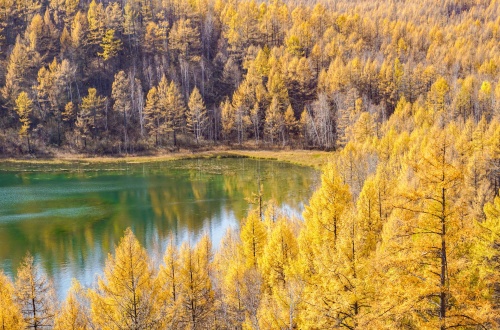 Tuofengling Tianchi
Tuofengling Tianchi
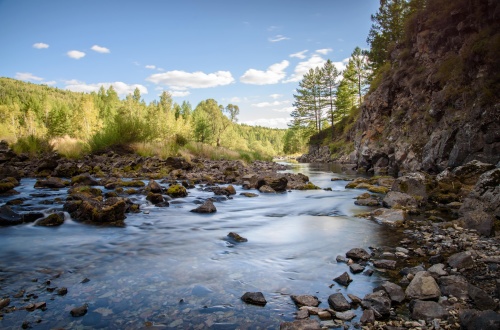 The Santan Gorge of Arxan National Forest Park
The Santan Gorge of Arxan National Forest Park
Ergun Wetland
Geographic Overview
Erguna Wetland, located in Erguna City, Hulunbuir, Inner Mongolia Autonomous Region, is the largest primary woody wetland in Asia, covering a total area of 126,000 hectares. It has been listed as one of "China's Most Beautiful Wetlands" by Chinese National Geography. With the Erguna River at its core, the wetland connects four landforms: rivers, swamps, forests and meadows. Overlooking from the Xishan Viewing Platform, the river course winds through the wetland like a silver snake, forming multiple "S"-shaped bends. The vegetation on both banks changes color with the seasons—tender green in spring, dense shade in summer, interwoven red and yellow in autumn, and snow-covered in winter—making it a photography destination "suitable for shooting in all four seasons". More than 20 species of birds such as swan geese, egrets and red-crowned cranes inhabit the wetland's surrounding areas, allowing the perfect combination of ecological photography and landscape photography. In 2025, it was also included in Inner Mongolia's "New Ways to Travel TOP 100" list, becoming an emerging popular photography spot.
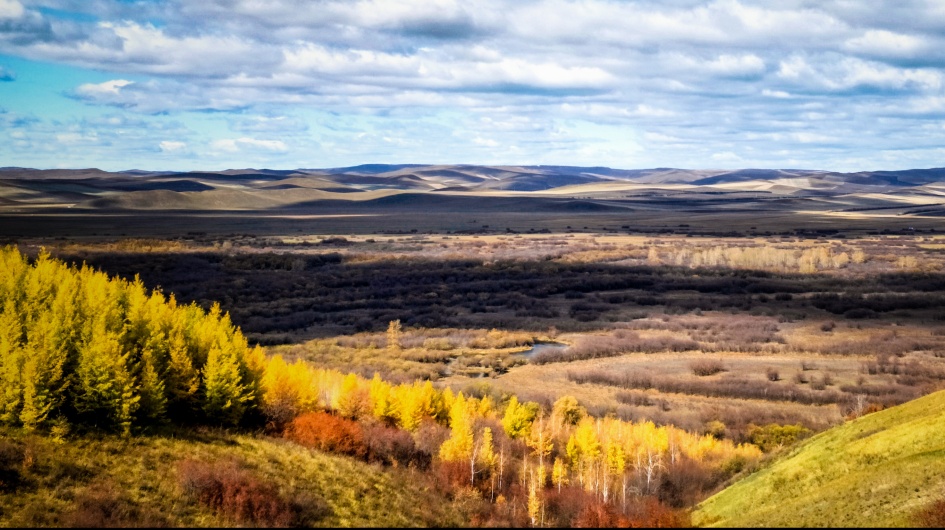 Ergun Wetland
Ergun WetlandPhotography Themes and Best Times To Shoot
The best season for photography at Erguna Wetland is from late September to early October, with the peak color period in 2025 being September 20 to October 5. During this time, the wetland's birch forests, bird cherries and shrubs display three colors—golden yellow, fiery red and orange red—forming a "colorful river valley" landscape together with the green Mongolian pines and the blue Erguna River, reaching the highest color saturation of the year. Around September 25, the probability of morning mist in the wetland is the highest. From 5 am to 7 am, the thin mist shrouds the river valley, and sunlight passes through the mist to form "light pillars", making it the best time to shoot the "fairyland wetland". In summer (June-August), the wetland's vegetation is mainly green, but at this time, purple irises bloom all over the swamps, allowing the shooting of the ecological scene of "purple flowers dotted on a green carpet". In spring (April-May), swan geese migrate north, so you can shoot the scene of migratory birds flying in flocks at the wetland's Bird Island.
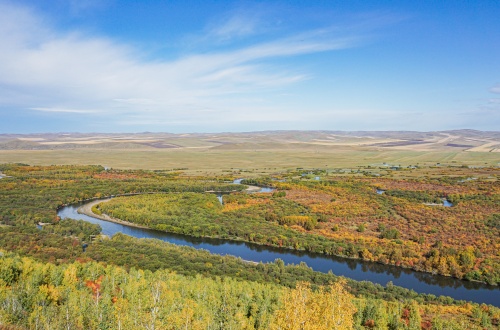 Erguna Wetland in September
Erguna Wetland in September
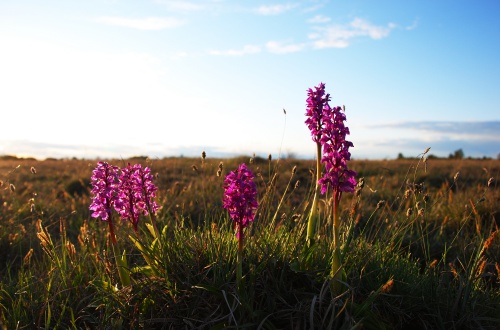 The purple flower of the Erguna Wetland
The purple flower of the Erguna Wetland
Recommended Photography Spots & Tips
Xishan Viewing Platform, the wetland's core photography spot, has two parts: "Main Viewing Platform" and "Secondary Viewing Platform". The Main Viewing Platform offers a wide view for the wetland's full scene—use a wide-angle lens to get the river's "S"-shaped curve, colorful forests on both banks and Erguna City's full view in the distance. Slanting sunlight from 3 pm to 5 pm makes the wetland's layers stand out. The Secondary Viewing Platform is nearer the river. It's good for using a telephoto lens to take partial "river-forest" shots and capture color details. Genhe Wetland Boardwalk is for close-up wetland photos; it's built along the marsh edge, letting you shoot close-ups of "trees reflected in water". Bird Island Observation Point works well for ecological photography. Swans gather here from early to mid-September. 6 am to 8 am is when birds are most active—use a telephoto lens and set it to shutter-priority mode to keep flying birds from looking blurry. Wear camouflage or dark clothes to disturb the birds less.
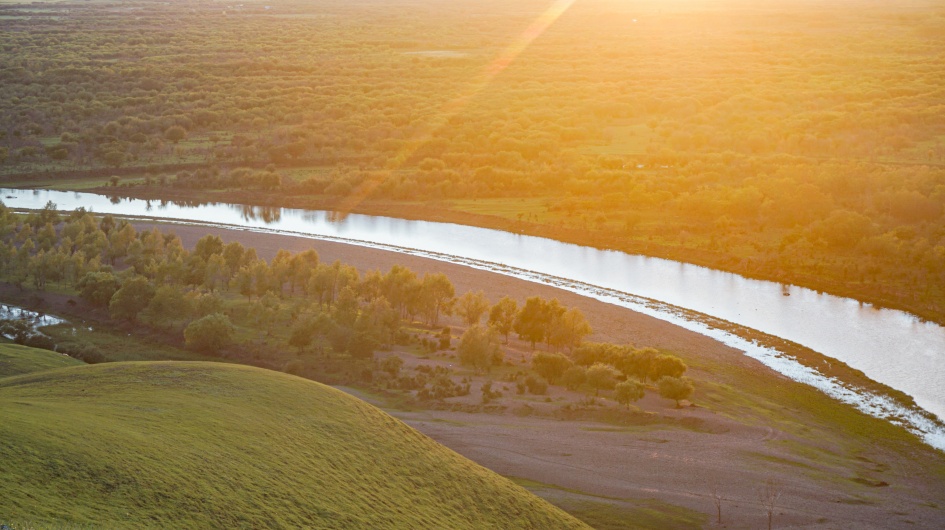 The river of Ergun Wetland
The river of Ergun WetlandEjina Populus Euphratica Forest
Geographic Overview
Ejin Populus Euphratica Forest is located in Ejin Banner, Alxa League, Inner Mongolia Autonomous Region; it is a national 5A-level tourist attraction and one of the world's three major Populus Euphratica forest areas, covering a total area of 380,000 mu (about 25,333 hectares), with primitive Populus Euphratica forests accounting for more than 60%. Populus Euphratica trees are known for the trait of "living for a thousand years without dying, standing for a thousand years after death, and remaining undecayed for a thousand years after falling", making them a highly narrative photography subject in nature. The scenic area is divided into "1st to 8th Bridges", with distinct landscape differences in each area: the 2nd Bridge is famous for reflections, the 4th Bridge features thick and sturdy Populus Euphratica trees, the 8th Bridge combines deserts and Populus Euphratica, and the Strange Forest highlights the silhouettes of withered Populus Euphratica trees. At the same time, the scenic area is adjacent to the Heishui City Ruins and Juyan Lake, allowing for linked shooting of the "nature and history" composite landscape. During the 26th Populus Euphratica Ecological and Cultural Tourism Festival in 2025, the scenic area received an average of over 10,000 photography enthusiasts per day.
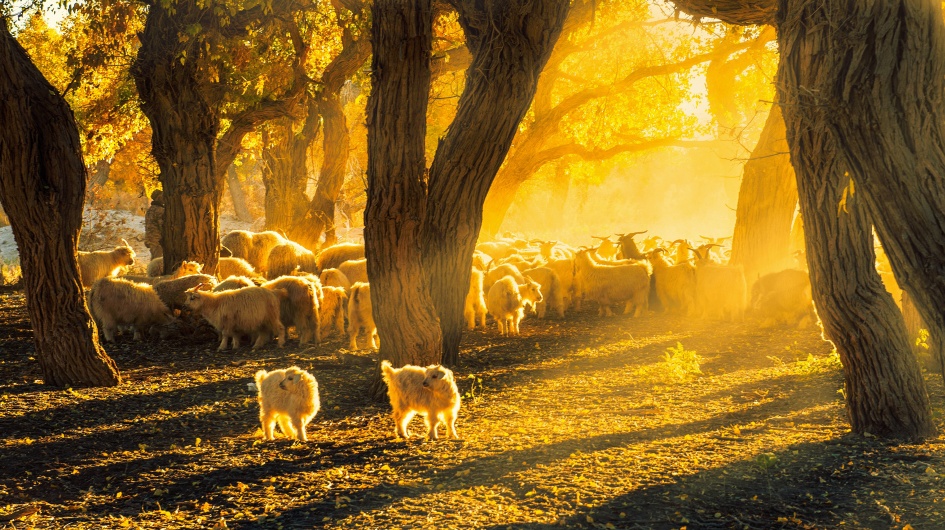 Ejina Populus Euphratica Forest
Ejina Populus Euphratica ForestPhotography Themes and Best Times To Shoot
Ejin Populus Euphratica Forest has a very short best photography period. Its 2025 golden time is from October 5 to 20, and October 7 to 15 is the "full golden phase". Then, the tree leaves turn the deepest golden yellow, with high translucency. When sunlight hits them, they show a "gold foil shine"—this is the key time to shoot "golden Populus Euphratica". On-site checks on September 23, 2025, found the bottom leaves of the forest have started to yellow, while the top ones are still green. It's expected to enter the "gradual color change phase" after October 1, so you can take photos of transitional scenes with "mixed yellow and green". After October 20, leaves fall little by little, making scenes easy to look sparse and hurting the overall texture. If you want to shoot "Populus Euphratica with ice and snow", you can choose early November. But the temperature is low then (-5℃ to 5℃), so you need to keep your equipment and yourself warm.
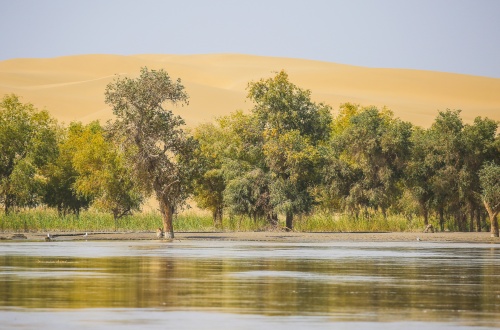 Green populus euphratica
Green populus euphratica
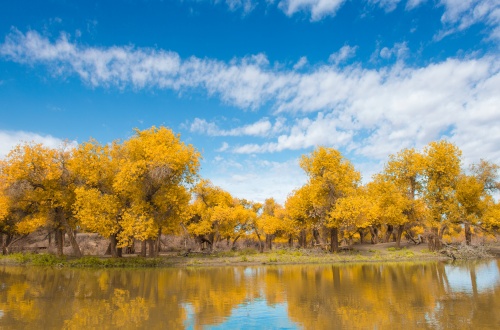 Golden populus euphratica
Golden populus euphratica
Recommended Photography Spots & Tips
The 2nd Bridge is the top choice for shooting poplar tree reflections. From 6:00 to 8:00 in the early morning when there is no wind, the water surface is as calm as a mirror. Use a symmetrical composition to fully include the golden poplars and their reflections in the water within the frame. The poplar trees in the 4th Bridge have thick trunks, with some having a diameter of up to 1.5 meters, making them suitable for close-up shots with a telephoto lens. Focus on the texture of the tree bark and the sense of layering of the branches and leaves; when shooting against the light, the edges of the leaves will form a "golden contour light". When taking photos of people standing beside the poplars, this contour light can be used to create an image of "harmonious coexistence between humans and poplars". Strange Forest is ideal for shooting sunset silhouettes. From 17:00 to 19:00 when the sun sets in the west, the twisted branches of the withered poplars form black outlines under the setting sun. Use a wide-angle lens to take panoramic shots and showcase the "magnificence at the end of life". Juyan Lake is an extended photography spot for the poplar forest itinerary. From 5:30 to 7:00 in the early morning, the reeds take on a warm yellow color, contrasting with the dark blue lake surface. Use a slow shutter speed to make the lake surface take on a velvety texture, while capturing the dynamic trajectories of migratory birds skimming the water surface (shutter priority mode is required).
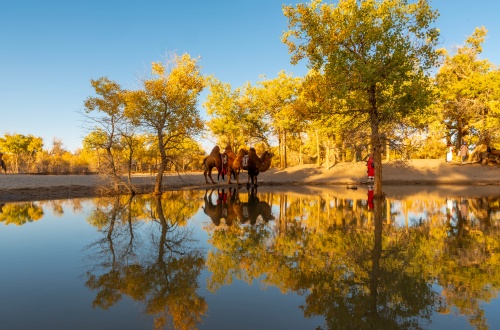 The reflection of a populus euphratica in water
The reflection of a populus euphratica in water
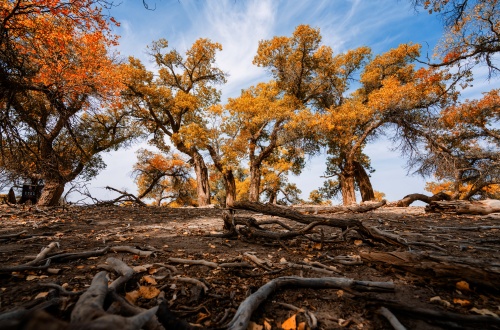 Strange Forest
Strange Forest
Badain Jaran Desert
Geographic Overview
The Badain Jaran Desert is situated in Alxa Right Banner, Alxa League, Inner Mongolia Autonomous Region. As the third-largest desert in China, it covers a total area of 47,000 square kilometers and has been named "China's Most Beautiful Desert" by the Chinese National Geography. Characterized by its "height, grandeur, uniqueness and beauty", the desert features the world's tallest sand dunes, 144 desert lakes (commonly known as "Haizi" in Chinese) and rare singing sand landscapes. Meanwhile, it is home to Tibetan Buddhist temples and ancient rock art sites, forming diverse photography themes that combine "desert, lakes and humanity". With extremely low light pollution, the desert provides excellent conditions for astrophotography. In 2025, it was also included in the list of "Inner Mongolia Astrophotography Bases", becoming one of the top choices for astronomy photography enthusiasts. The sand dunes here have graceful curves, and the slanting light in the early morning and evening outlines textures with alternating light and shadow. The colors of the lakes change with the seasons and the light. Whether shooting desert scenery, ecological close-ups or humanistic documentaries, one can create works with strong visual impact.
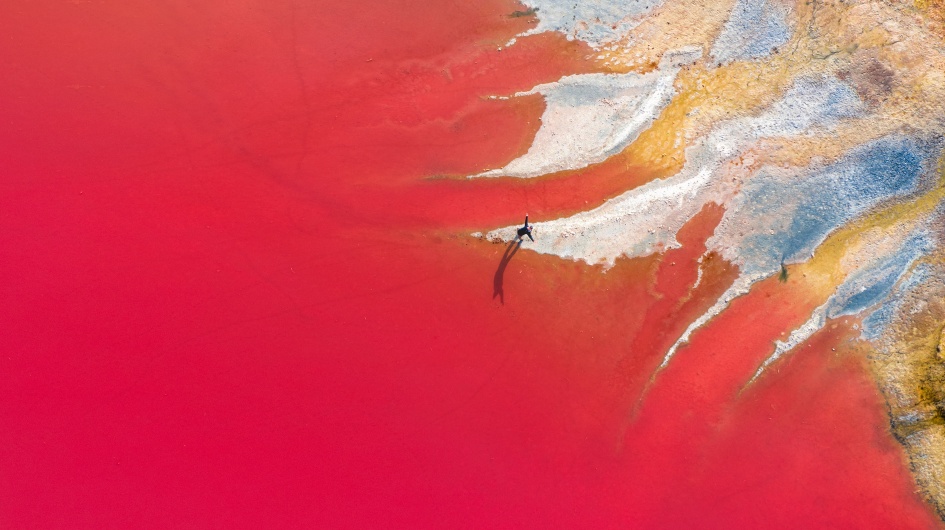 Badain Jaran Desert's Red Lake(Honghai Zi)
Badain Jaran Desert's Red Lake(Honghai Zi)Photography Themes and Best Times To Shoot
Spring and autumn are the best seasons to take photos in the Badain Jaran Desert. From April to May (spring), temperatures stay between 15°C and 25°C. The sand dune surfaces are dry, so sand blowing rarely happens. Also, plants around the lakes start to turn green—this lets you take lively pictures of "alternating sand and greenery". September to October (autumn) has nice temperatures and soft light. Under this slanting light, the lines on the sand dunes look clearer. This time is key for shooting the "golden sea of sand". In 2025, the best autumn period will be from September 20th to October 15th. During these days, the desert has little rain and many sunny hours. Every day from 17:00 to 19:00, the setting sun turns the sand dunes golden-red. The colors are bright, and the lake reflections are sharper, too. Summer (June-August) is not good for outdoor photography. At noon, temperatures can go over 40°C, and the ground can get hotter than 60°C. But you can still take photos of "desert morning mist" and "molten gold at sunset"—try early mornings (5:00 to 7:00) or evenings (18:00 to 20:00). Winter runs from November to March next year. Snow covers the sand dunes then, making a "white desert" view. This view is special, but the cold (between -10°C and -20°C) is hard on cameras. So only professional photography teams should go then. Another tip: around the 1st and 15th of each lunar month, the Milky Way looks clearest on clear nights. These are the best times to take photos of the desert's starry sky.
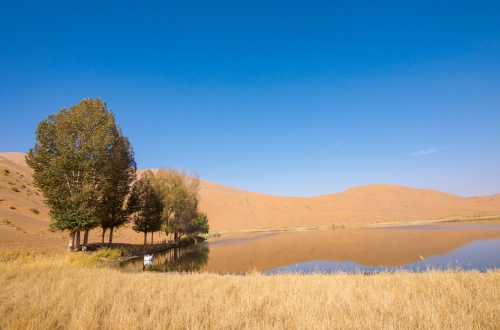 The trees in Badain Jaran Desert
The trees in Badain Jaran Desert
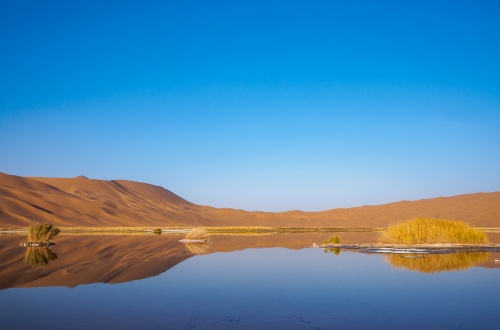 The lake water in Badain Jaran Desert
The lake water in Badain Jaran Desert
Recommended Photography Spots & Tips
To take full views of the desert, Bilutu Peak is the key spot. You can only get to its top by taking an off-road vehicle from the scenic area—only professional teams are allowed in. Get to the top between 6:00 and 8:00 a.m., then use a wide-angle lens to take the "sand dune peaks" panorama. The sun comes from the east, making the light and dark parts of the sand dunes stand out. Faraway lakes look like gems scattered in the sand sea, and the scene is grand. If you want to take close-up shots of the texture of this "Desert Everest", use a telephoto lens to catch the curves on the sand dune's top. This shows how steep and great it is. Dagetu Lake (Pink Lake) is pink because of high-salinity algae and minerals. Its color is brightest from September to October. At noon, when the sun shines straight down, the pink is strongest. In the evening, the setting sun turns the sand dunes golden-red. This color mixes with the pink lake water, making a special "gold and pink mix". This time is best for taking creative photos. There is a Badain Jaran Temple near Miaohaizi (Sumin Jilin). The temple has white walls and golden roofs. It looks very different from the golden sand dunes and blue lake. In the morning, take photos of the temple's reflection in the lake. Use a medium telephoto lens to get the symmetrical "temple-lake-sand" picture.
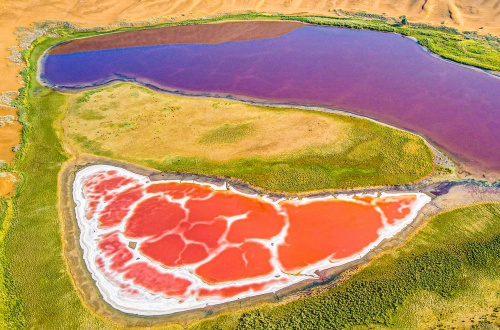 The colorful lakes of Badain Jaran Desert
The colorful lakes of Badain Jaran Desert
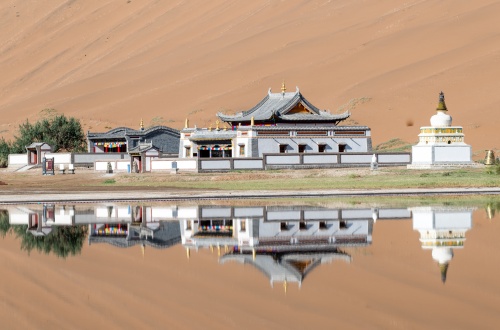 Badain Jaran Temple
Badain Jaran Temple
If you are interested in the scenery and folk customs of Inner Mongolia, you can also check out our travel routes:
Drop us a line and we'll connect you with the top China expert in no time!
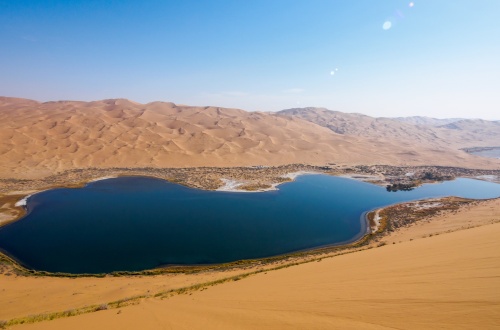 Badain Jaran Desert
Badain Jaran Desert 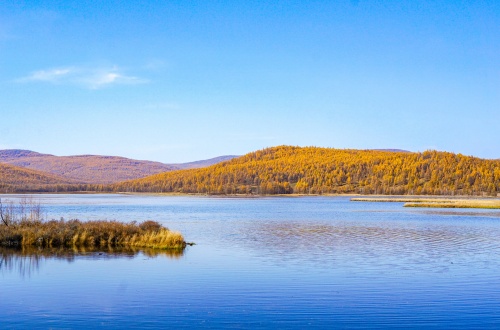 Arxan National Forest Park
Arxan National Forest Park 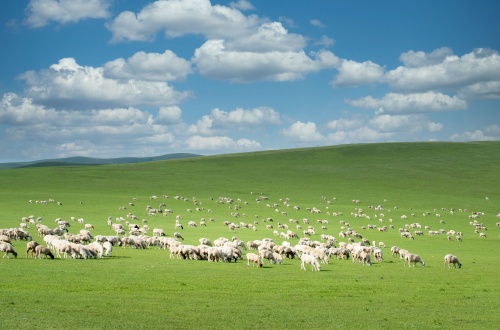 Hulunbuir Grassland
Hulunbuir Grassland 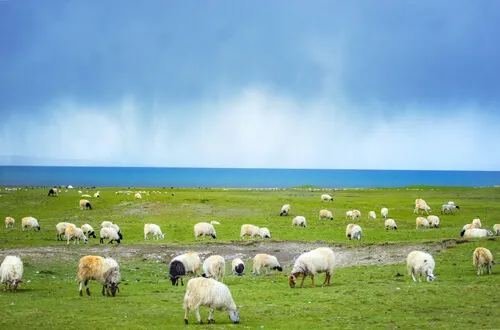 Inner Mongolia Travel Guide
Inner Mongolia Travel Guide